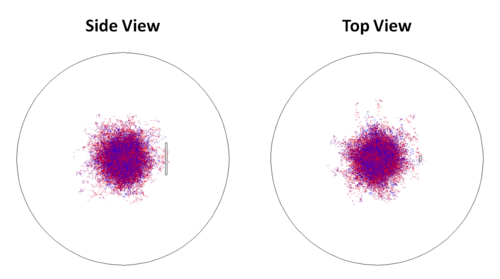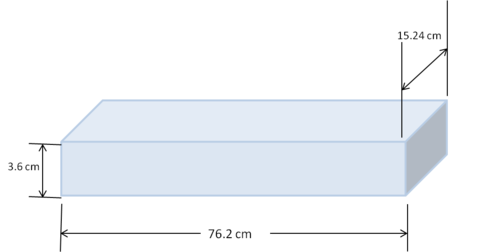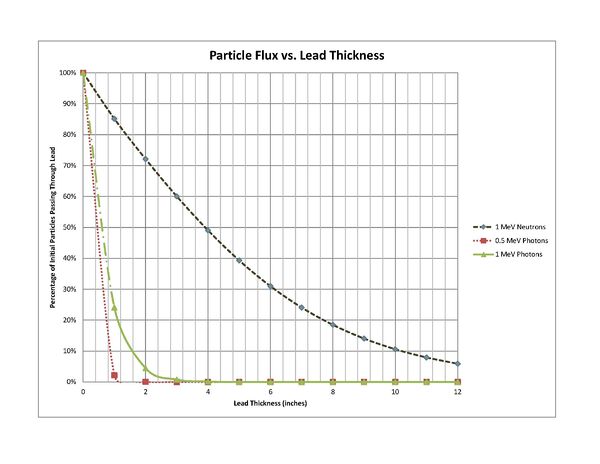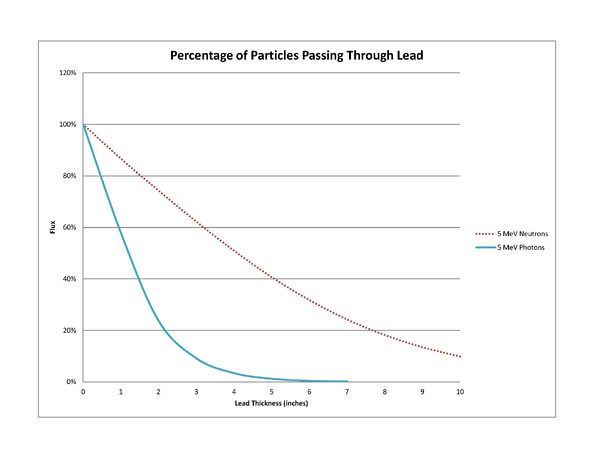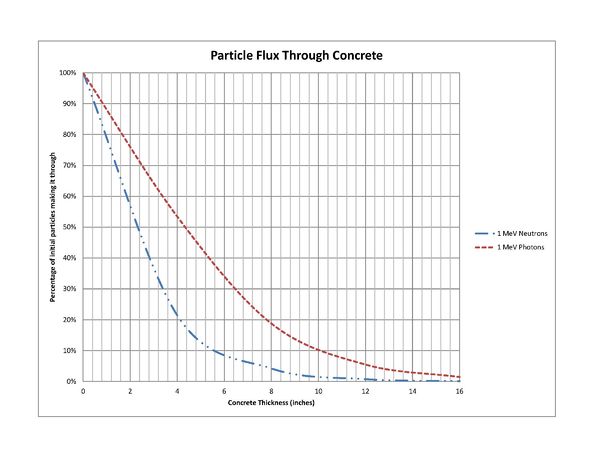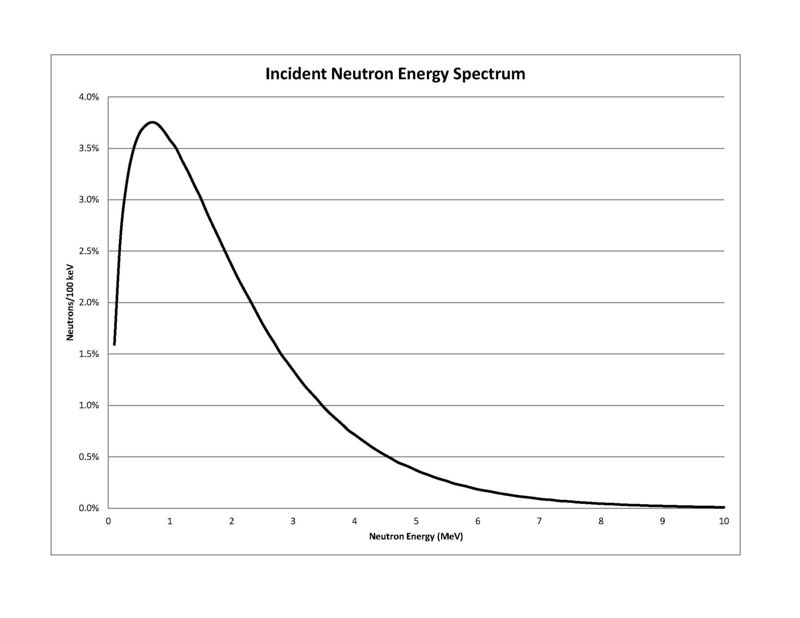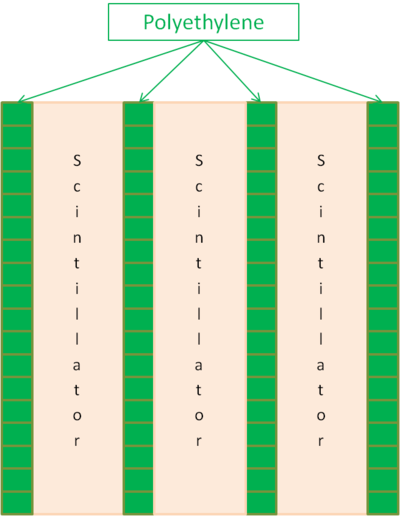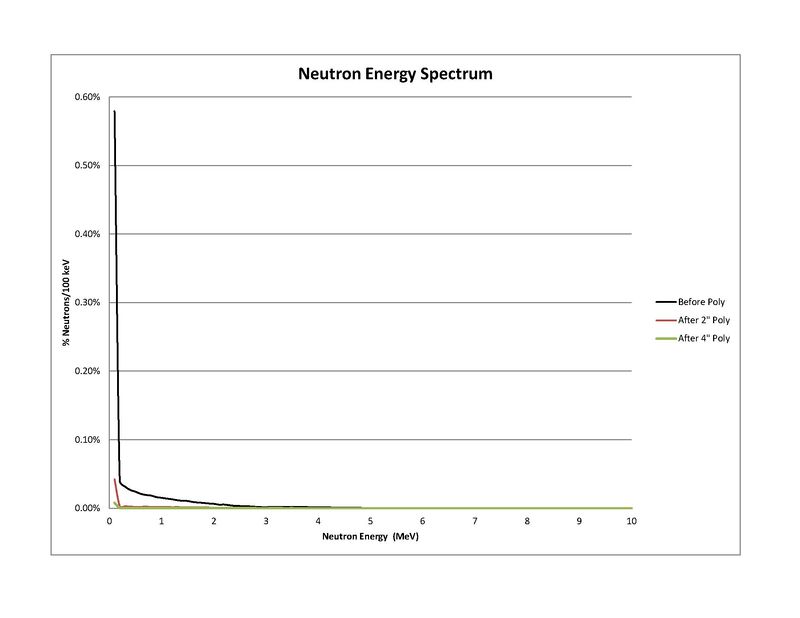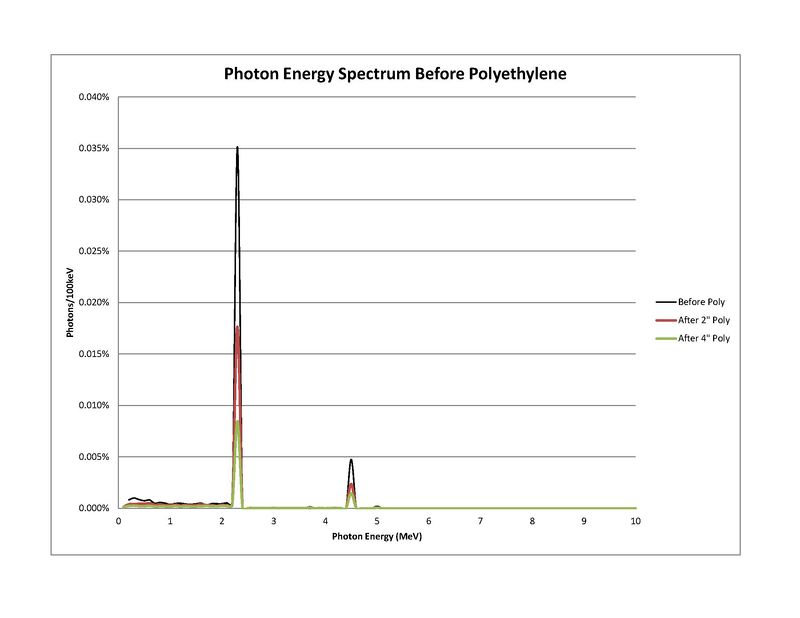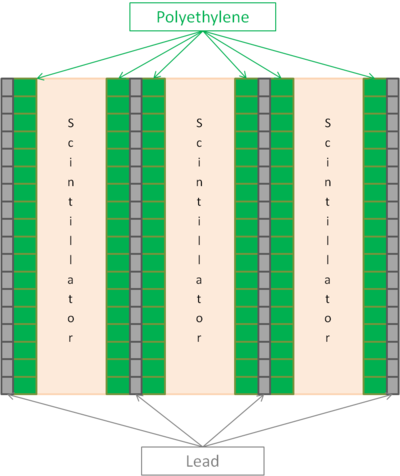Difference between revisions of "2-Neutron Correlation Setup Stuff"
| Line 48: | Line 48: | ||
[[File:1MeV_Concrete.jpg | 600px]] | [[File:1MeV_Concrete.jpg | 600px]] | ||
| + | |||
| + | == Detector Cross-Talk == | ||
| + | |||
| + | Using MCNPX, I am trying to simulated the cross-talk we could expect between the big detectors. I used a fission neutron energy spectrum given in MCNPX, shown below. | ||
| + | |||
| + | [[File:FissionNeutronEnergySpectrum.jpg | 800px]] | ||
| + | |||
| + | These neutrons are incident upon a plastic scintillator and I will look at the neutrons and photons coming out of the scintillator's sides perpendicular to the incident beam. The first case I will look at is where the detectors are placed with only polyethylene between them, as illustrated below. | ||
| + | |||
| + | [[File:OLead.png | 400px]] | ||
| + | |||
| + | This results in a neutron and photon energy spectrum as follows. | ||
| + | |||
| + | [[File:NeutronEnergySpectrum.jpg | 800px]] | ||
| + | |||
| + | [[File:PhotonEnergySpectrum.jpg | 800px]] | ||
| + | |||
| + | The next case I will look at is where we put a layer of lead between the polyethylene between the detectors, as shown in the schematic below. | ||
| + | |||
| + | [[File:DetectorSetupwLead.png | 400px]] | ||
| + | |||
| + | The results for this setup using 1 inch of lead between the detectors is as follows. | ||
| + | |||
| + | [[File:NeutronEnergySpectrumPb.jpg | 800px]] | ||
| + | |||
| + | [[File:PhotonEnergySpectrum1inPb.jpg | 800px]] | ||
| + | |||
| + | And, the results for this setup using 2 inches of lead between the detectors is as follows. | ||
| + | |||
| + | [[File:NeutronEnergySpectrum2Pb.jpg | 800px]] | ||
| + | |||
| + | [[File:PhotonEnergySpectrum2Pb.jpg | 800px]] | ||
| + | |||
[https://wiki.iac.isu.edu/index.php/PhotoFission_with_Polarized_Photons_from_HRRL Go Back] | [https://wiki.iac.isu.edu/index.php/PhotoFission_with_Polarized_Photons_from_HRRL Go Back] | ||
Latest revision as of 15:42, 11 July 2012
Big Detector Solid Angle Calculations
- MCNPX Simulation
- 14 MeV neutron source, emitted isotropically ()
- Detector placed 1m away from source
- face of the detector is 15.24cm x 76.2cm, and 3.6cm deep
The solid angle can be found from the number of particles hitting the detector as:
- Results
- Out of 1E9 neutrons generated, 8618287 neutrons hit the detector
-
- if the detector is placed 70cm away from the source,
- if the detector is placed 65cm away from the source,
-
- As a test to verify our results
- We change the detector size to 2cm by 2cm and used 1E9 neutrons again
- 32061 neutrons struck the detector
- And, as a second test to verify our results
- We change the detector size to 1cm by 1cm and used 1E9 neutrons again
- 7965 neutrons struck the detector
- Now, what neutron singles rate into the detector should correspond to 1 fission per pulse?
- If we have 1 fission per pulse and each fission emits on average 2.3 neutrons, we should expect 2.3 neutrons/pulse
- The number of neutrons hitting the detector per pulse is found as
- @ 1 meter => 0.0198 neutrons hitting the detector per pulse
- @ 70 cm => 0.0379 neutrons hitting the detector per pulse
- Taking into account the efficiency of the detector , the number detected per pulse can be found as
- @ 1 meter from source => () neutrons detected per pulse
- @ 70 cm from source => () neutrons detected per pulse
Neutron and Photon Flux Through Lead
Using MCNPX, a simulation was done to determine how much of the neutrons and photons from the target will be blocked by various thickness of lead. With a monochromatic pencil beam of incident particles, the following results illustrate how much of the initial beam actually made it through the lead.
Neutron and Photon Flux Through Concrete
Detector Cross-Talk
Using MCNPX, I am trying to simulated the cross-talk we could expect between the big detectors. I used a fission neutron energy spectrum given in MCNPX, shown below.
These neutrons are incident upon a plastic scintillator and I will look at the neutrons and photons coming out of the scintillator's sides perpendicular to the incident beam. The first case I will look at is where the detectors are placed with only polyethylene between them, as illustrated below.
This results in a neutron and photon energy spectrum as follows.
The next case I will look at is where we put a layer of lead between the polyethylene between the detectors, as shown in the schematic below.
The results for this setup using 1 inch of lead between the detectors is as follows.
And, the results for this setup using 2 inches of lead between the detectors is as follows.
